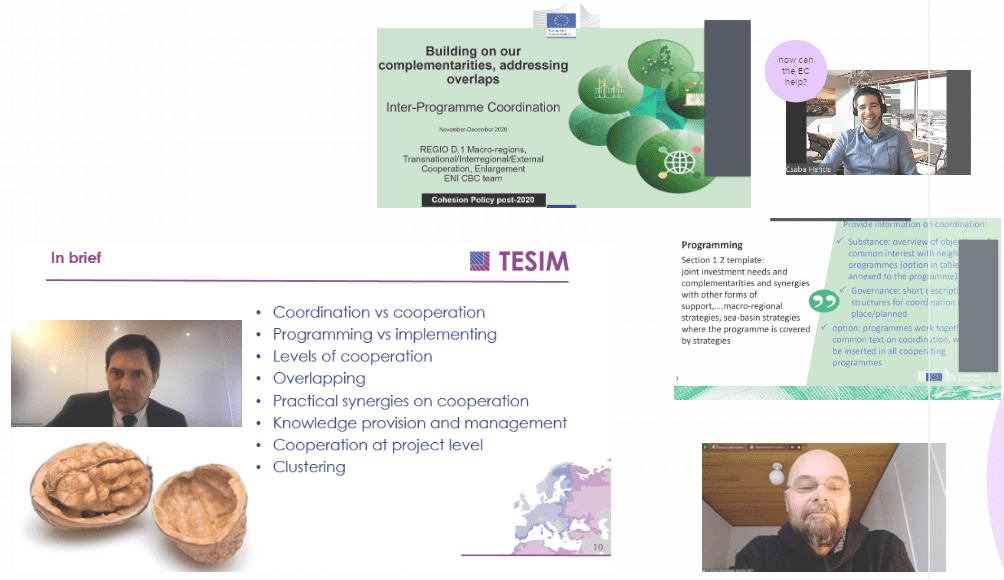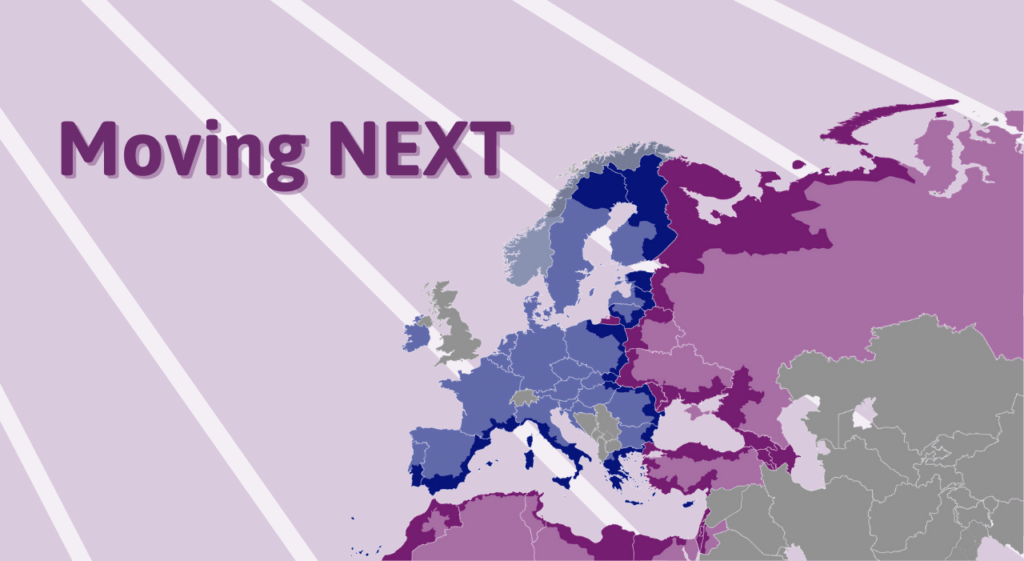Good things always come in threes
For the third time, neighbourhood cross-border cooperation programmes face the challenge of travelling the full road from the analysis of their territories to defining their strategies. With the experience of ENPI CBC and ENI CBC well in mind, the future Interreg NEXT programmes are fully equipped to complete this third journey without major concerns. The road is not fully free from pitfalls though. In the series of TESIM cluster events taking place these weeks, many lessons have been shared, the best ways to circumvent the potential obstacles have been identified and the three Cs that should steer the process were thoroughly examined. Jump onboard!
Our common journey starts in our territories, our border regions. The new regulatory approach to post-2020 programming is permeated by the concept of territoriality, which incorporates a series of new ways of conceiving programming. By answering the crucial question “why we need these specific measures in this area”, the aim is that of enhancing the territorial narration of programmes, helping them to identify cross-border needs more concisely and make them more specific and unique. Thus the importance of the territorial analysis.
When looking at the past, most programmes acknowledge that some decisions related to the programme strategy could have been made differently, but that, overall, the strategies have proved solid and that only to a small or to moderate extent there has been a need to make adjustments. It is important though not to be too far away from the capacities of the actors in the territories and to properly assess the elements of continuity and, most important, those of twist. New themes may expand the thematic horizon, but efforts may prove vain if the capacities of the potential beneficiaries to address them is limited. Important conclusions relate also to the unbalanced competition between differently experienced actors and the need to guarantee the arrival of newcomers to the cross-border cooperation environment. In this context, the reinforcement of the people-to-people dimension resonates as one of the strands of intervention in the future. Looking ahead, the territorial analyses so far are well detailed and seem to capture the extent of the challenges faced by the territories. Due to the lack of data at regional level, sometimes the cross-border dimension is not so easy to convey and, for this, it is of high importance to duly take into account the lessons learned during the implementation of ENI CBC. A risk to be borne in mind is also the loss of relevant pieces of information when moving from an in-depth analysis to its summary in the final cooperation template. Whatever the final decision, it is not sufficient to just analyse: socio-economic partners, regional and local stakeholders and civil society have to be Consulted and involved in the design of future programmes, a role that should then be continued during the delivery and monitoring.
 The establishment of Cooperation mechanisms between programmes, in particular when they cover overlapping territories, is being continuously flagged as one of the main principles guiding the design and implementation of future programmes. In spite of the overall willingness to cooperate, time and resources appear as the key limitations. Still, many examples of active cooperation already exist, showing the added value and the multiplier effect of teaming up. When asked, programmes insist on the need to lay the foundations for cooperation already in the programming phase, although they recognise the difficulties and in part the poor results achieved so far. On the other hand, programmes realise that it is in the implementation phase that many synergies can be achieved and many duplications avoided. Looking ahead, many levels of coordination and cooperation can be established and declined, as shown in the result of the exercises proposed to the participants of the events. Cooperation can take place on a territorial or on a thematic basis, between programmes and projects, within Interreg NEXT or within the broader Interreg family, if not beyond. Cooperation can be technical, focusing on implementation mechanisms, or pave the way for a process of capitalisation of results. In fact, the experience accumulated so far can generate a capital of knowledge of shared value and immediate use, impacting not only the implementation of programmes, but also an evidence-based policy making.
The establishment of Cooperation mechanisms between programmes, in particular when they cover overlapping territories, is being continuously flagged as one of the main principles guiding the design and implementation of future programmes. In spite of the overall willingness to cooperate, time and resources appear as the key limitations. Still, many examples of active cooperation already exist, showing the added value and the multiplier effect of teaming up. When asked, programmes insist on the need to lay the foundations for cooperation already in the programming phase, although they recognise the difficulties and in part the poor results achieved so far. On the other hand, programmes realise that it is in the implementation phase that many synergies can be achieved and many duplications avoided. Looking ahead, many levels of coordination and cooperation can be established and declined, as shown in the result of the exercises proposed to the participants of the events. Cooperation can take place on a territorial or on a thematic basis, between programmes and projects, within Interreg NEXT or within the broader Interreg family, if not beyond. Cooperation can be technical, focusing on implementation mechanisms, or pave the way for a process of capitalisation of results. In fact, the experience accumulated so far can generate a capital of knowledge of shared value and immediate use, impacting not only the implementation of programmes, but also an evidence-based policy making.
The end of the road, which for some programmes is pretty close, will bring as a reward a fully-fledged programme strategy. All the technical aspects linked to its design, be it in terms of intervention logic, performance framework or indicators, were explained at large during the events, but the contents exceed what an article like this can cover. Let’s focus on two key aspects, then. The first one relates to Concentration. With financial envelopes likely to remain at their current level in the best-case scenario, programmes should be prone to concentrate their funds into a limited number of objectives and priorities if they want to have an impact on the territories. This will of course require a collective compromise among programme stakeholders, which is not always an ease task. But the first experiences in the run up to Interreg NEXT show that it is doable, and that reaching such a consensus does not necessarily have to be painful or frustrate expectations. The second aspect is one of circularity. We initiated our article talking about the story behind the territories. And at the end of the journey, the combination between objectives, actions and indicators should tell the same programme story. Because each programme is different to another, and its peculiarities should clearly stand out.
The road to Interreg NEXT is neither long nor winding, and it leads to no door (sorry John, sorry Paul). It is certainly an adventurous one; to that we can agree. But we all have the experience and the necessary guidance. Most important, we have the best travel companions one could imagine. While writing this article, TESIM events have already targeted all land border programmes. Our final appointment is with sea basin and sea-crossing ones, programmes which, while facing the same journey, have a dimension of their own and should be analysed separately. Maybe in our next bulletin? Stay tuned!
